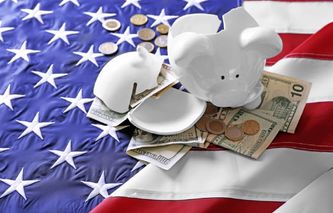People in the US adore their pets, and we’ve found plenty of pet spending statistics that prove it. The numbers show that with time, American pets are getting more treats, more toys, more walks, and better healthcare — as they should. Also, more and more Americans keep a furry (feathery, scaly) companion.
We’ve gathered numbers on pet ownership, pet owner demographics, the costs of having cats and dogs, and pet spending in general, as well as some info on inflation and pet costs.
Key Pet Spending Statistics for 2025:
90.5 million homes, or 70% of US households, own a pet.
70 million homes in the US are homes with a dog.
45.3 million homes in the US are homes with a cat.
32% of current pet owners in the US are Millennials.
In 2021, Americans spent $123.6 billion on pets.
People aged between 35 and 44 spend the most money on their pets.
On average, cats cost $687 annually, or $57 per month.
On average, owners spend $100 on their dogs per month.
The number of insured pets grew by 28.3% in 2021.
Only 2.48% of pets in the US are insured.
Pet Ownership Statistics
90.5 million homes, or 70% of US households, own a pet.
In 1988, the percentage of American households with pets was 56%; then, it rose to 62% by 2008. Another 6% of American households got pets by 2013. After the pandemic, the number of pet owners in the US spiked, with 90.5 million homes made happier with a pet in 2021.
(APPA, Statista)
14% of respondents in the US obtained a new pet during the pandemic.
Pet owner statistics show the pandemic affected people who had previously been pet-free to welcome an animal into their home, and it also got pet owners to find room for one more. Also, a quarter of new pet owners said the pandemic influenced their decision to get a(nother) pet.
(APPA)
70 million homes in the US are homes with a dog.
Dog ownership statistics put the number of US homes with dogs at 70 million in 2021, making the US a predominantly dog-loving country. The pandemic motivated people to get a dog, with 8% of dog owners saying they got their first dog in late 2020, while 20% adopted or fostered a shelter dog.
(APPA, Statista)
45.3 million homes in the US are homes with a cat.
Cats are the second-most-popular pet in the US, sparking joy and wreaking havoc in 45.3 million US homes. Cat ownership statistics say 14% adopted the cat from a shelter, while 7% fostered it.
(APPA)
11.8 million US households own freshwater fish.
Pet owners’ statistics indicate that freshwater fish are the third most popular pet in the US. Other popular pets include birds, owned by 9.9 million US households, small animals such as hamsters, owned by 6.2 million, reptiles at 5.7 million, horses at 3.5 million, and saltwater fish swimming in 2.9 million US households.
(APPA)
The fastest-growing group of pet owners is childless married couples under 40.
Pet ownership trends show this is the fastest-growing population category of pet owners. More than 30% of people who reported spending time with pets are from this group, compared to 2005 when the percentage was around 20%. For comparison, the next group that spends the most time with their pets is childless couples over 40, but the growth of pet ownership hasn’t been as fast in this group.
(Washington Post)
32% of current pet owners in the US are Millennials.
If we look at the generational structure of pet owners, statistics will tell us that Millennials are by far the most numerous pet-owning group. Consequently, pets are a huge part of Millennial spending habits. Baby Boomers make up 27% of pet owners, followed by Gen X at 24%. Numbers on Gen Z say they account for 14% of pet owners, while the Silent generation accounts for 3%.
(APPA)
Pet ownership statistics show women are more likely to own pets.
Women are more likely to own pets than men (64% compared to 57% of men). Also, White people own pets more often (68%), followed by Hispanic people (59%) and Black people (32%).
(Washington Post)
General Pet Spending Statistics
In 2021, Americans spent $123.6 billion on pets.
According to the latest report, the pet industry was worth $123.6 billion. This represents a significant increase compared to earlier industry revenue, with $90.5 billion in 2018, $97.1 billion in 2019, and $103.6 billion in 2020.
(APPA, Statista)
The highest spend on pets was seen in the food & treats category with $50 billion.
In 2021, US pet owners spent $50 billion on food and treats, followed by vet care and products at $34.3 billion. In addition, pet industry statistics show owners spent $9.5 billion on services such as boarding, grooming, training, walking, and pet sitting.
(APPA)
People aged between 35 and 44 spend the most money on their pets, or $137 per month.
Pet owners aged 18 to 34 are right behind the older age group at $133 per month, while spending on pets decreases with each age group after that. People aged 45 to 54 spend an average of $105 on their most expensive pet, those aged 55 to 64 spend $74, and those over 65 spend $59 on average.
(Statista)
The annual pet industry growth rate is projected at 8% by 2030.
With pet spending staying consistent and younger generations especially doing everything to keep their pets’ standard of living stable, this report by Morgan Stanley predicts the pet industry will remain relatively stable even in the case of a recession.
(Morgan Stanley)
Supplies, live animals, and OTC meds experienced the highest growth at 17.8%.
Numbers on the pet supply industry show $29.8 billion was spent on supplies, live animals, and OTC meds in the US in 2021. Live animals included in this statistic refer to fish, birds, small animals, and reptiles.
(APPA)
38% of pet owners had to reduce spending on their pets due to inflation.
Statistics on pet owners show that owners are increasingly having issues with affording their pets everything they’re used to. While 38% of them had to reduce costs, 55% of them didn’t have to cut spending on their pets, and 8% said their spending increased compared to the year before.
(Forbes Advisor)
42% of pet owners would have to go into debt in case of a surprise vet bill.
Pet spending statistics point to the impact inflation has on pet owners, as 42% say they would have to go into debt in case of a surprise vet bill. 44% of respondents went into credit card debtto pay for a surprise vet bill in the six months prior to the 2022 survey, while 18% said they had to cut into their savings to pay.
(Forbes Advisor)
49% of Millennial and Gen Z pet owners order pet products online.
The popularity of online shopping is high among Gen Z and Millennials. In addition, 35% of Gen X pet owners shop for pet products online, as well as 26% of Baby Boomers and 24% of Builders. 39% of online shopping goes to pet subscriptions, and most of them (66%) are pet food subscriptions.
(APPA)
Cat Cost Statistics
On average, cats cost $687 annually, or $57 per month.
While most Americans will spend between $305 and $1,450 on their cats every year, the first year will include additional costs. The costs range from $695 to $3,100 per year and include adoption fees, certificates, vaccinations, and initial investments in cat beds and scratching posts. Getting a cat microchipped usually costs around $100, which is an additional expense in the first year.
(Rover, Statista)
The cost of spaying a cat ranges between $200 and $400.
The cost of neutering a cat is similar, with the procedure taking owners back anywhere between $200 and $400 at a private clinic. However, there are low-cost clinics that offer the procedure for around $100, and even shelters with reduced prices for owners who can’t afford the procedure, or mobile clinics offering the procedure for free.
(Daily Paws)
Cat litter can cost as little as $70 a year.
Cat litter is an unavoidable expense for cat owners, and while it can cost up to $500 a year for expensive brands, you can find it in much more affordable options. Also, many cat owners find litter disposal systems highly practical, and they are a one-time investment of $20 to $70.
(Rover)
The usual cat food cost per month is between $10 and $160.
While there are premium options for cat food, there is nothing wrong with the more affordable options either. The annual costs of cat food are between $150 for cheaper types of food and $750 for the most expensive cat food.
(Rover)
Dog Cost Statistics
On average, owners spend $100 on their dogs per month.
Having dogs can cost between $480 and $3,470 annually, although the average spending is around $1,200 per year or $100 per month. The expenses are the highest in the first year, with adoption fees, vet visits, training, microchipping, and pet supplies, and can amount to $1,050- $4,480.
(Rover, Statista)
The cost of spaying a dog ranges between $50 and $500, depending on several factors.
Private vet offices are usually more expensive, but you will have your personal vet handle the treatment of your dog. However, you can find cheaper options that are subsidized or even mobile clinics that provide free procedures. The size of the dog influences the price significantly. On the other hand, the cost of neutering a dog is lower and can range between $35 and $250 depending on your dog's size and health.
(Daily Paws)
Dog grooming can cost between $20 and $150, depending on the breed.
The figure will vary depending on the breed and coat type, costing less for shorthaired pets who can even be groomed at home. On the other hand, poodles and similar low-shedding dogs will require regular grooming, which can cost up to $150 per session.
(Rover)
The cost of dog training usually comes to $100-$200 for group training.
While owners can train their dogs at home, some choose to ask professionals for help. Depending on the owner’s needs, dog training can cost $400 for new puppy consultations or over $3000 for board-and-train arrangements. There are also options for individual issues, such as barking or jumping, or puppy classes that are cheaper.
(Arizona Humane Society, Daily Paws)
Pet Insurance Statistics
The number of insured pets grew by 28.3% in 2021.
More owners insured their pets in the US and Canada to reduce the financial impact of surprise vet bills, bringing the number to 4.41 million insured pets. As a result, the pet insurance market grew by almost a third in 2021.
(NAPHIA)
Only 2.48% of pets in the US are insured.
Pet insurance statistics show 3.89% of dogs are insured, compared to 0.95% of cats in the US, equating to 3.25 million dogs and 0.73 million cats. Still, with the rise in pet health insurance, the percentage of insured pets is highly likely to grow quickly.
(NAPHIA)
The average cat insurance cost is $130.24 for AO and $342.84 for the AI plan.
The average cost of pet insurance was calculated by the North American Pet Health Insurance Association, which covers 99% of the market, and costs vary depending on the plan. For example, the Accidents Only plan costs $130.24 on average, while the Accident and Illness plan costs $342.84 on average.
(NAPHIA)
For the Accident Only plan, the annual dog insurance cost is $239.11.
The cost of pet insurance is $583.91 annually for the average Accident & Illness insurance plan. The Accident Only plan is cheaper, costing $239.11 per year, but it doesn’t cover illnesses, digestive issues, and other chronic problems.
(NAPHIA)
The Takeaway
Americans spent over $123.6 billion on their pets in 2021, most of which went to food and treats. Numbers paint the picture of the typical pet owner: most of the pet owners are Millennials, with childless couples under 40 getting more pets than any other group. Dog owner statistics also show that more people own dogs than cats, while it’s more likely for women to own pets than men.
Finally, inflation and the rising cost of living forced a percentage of pet owners to reduce spending on their furbabies. On the other hand, pet owners are increasingly insuring their pets, with the number of insured pets growing by almost a third, according to the latest report.
Pet Spending FAQ
How much does the average person spend on pets per month?
How much money is spent on pets every year?
What aspect of pet ownership is the most money spent on?
What age group spends the most money on pets?
How much is the pet industry worth?
Sources:


.jpg)


